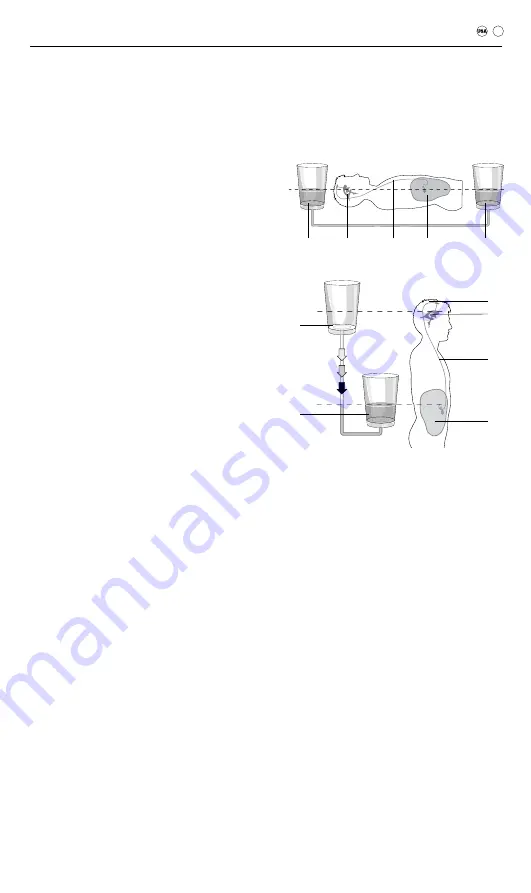
15
PATIENT HANDBOOK
GB
Now there is an urgent need to lower the intracra-
nial pressure und keep it within normal limits, in-
dependent of the body position. Finally, excessive
cerebrospinal fluid is drained into the abdominal
cavity. Due to changes in the patient’s body posi-
tion, the drainage system is subject to incessant,
considerable physical changes. Fig. 6 shows the
effects on the intracranial pressure when a tube is
implanted, although there has been no valve inte-
grated in the drainage system yet.
For simplicity, the abdominal pressure as well as
the ventricles can be regarded as open vessels,
which are now connected by a tube. As long as
the patient is lying down (head and abdomen at
the same height) and no valve is integrated in the
drainage system, both water levels are at the same
height, too: It is a system of communicating ves-
sels. In a simplified picture, the abdomen can be
regarded as an overflow vessel. Even if more fluid
is filled into the ventricle container, the water level in
it will remain at the same height, because the fluid
is instantly drained into the abdomen.
When the patient stands up, the ventricles are at a
significantly higher level than the abdomen. In this
case, the fluid is drained through the tube until both
water levels are at the same height. This means,
however, that the ventricle container is emptied
completely. Since the ventricles do not have rigid
walls, this emptying leads to a contraction of the
ventricles. This, in turn, can result in the above
mentioned blockage of the drainage system. The
cerebrospinal fluid is sucked out of the ventricles
and the brain suffers deformation. And when the
brain contracts, the resulting open space between
brain and skull bone can fill up with water or blood
(fig. 6).
Fig. 6: Ventricle drainage without a valve
a) horizontal, b) vertical
1 ventricle container
2 ventricle
3 drainage tube
4 abdominal cavity
5 abdominal container
6 accumulated water or blood
7 contracted ventricles
0
a) 1
2 3 4 5
b)
0
1
5
6
7
3
4
0
A conventional valve integrated into the drainage
system causes a rise of the water level in the ventri-
cle container, by exactly the opening pressure of
the valve. Now, the two containers “communicate”
only when the valve is open. When the patient
stands up, cerebrospinal fluid is drained off until
the height difference between the two containers
for the horizontal position is reached. However, the
opening pressure of the valve, which was adjusted
for the horizontal position, is considerably lower
than the pressure corresponding to the height dif-
ference between the ventricles and the abdomen.
Hence, the ventricles will still be drained empty,
resulting in the above mentioned problems (fig. 7).
Summary of Contents for GAV
Page 2: ......
Page 3: ...Abb 1 Fig 1 Abb 9 Fig 9 1 2 3 4 5 6 1 2 3 4 a b...
Page 4: ......
Page 41: ......
















































